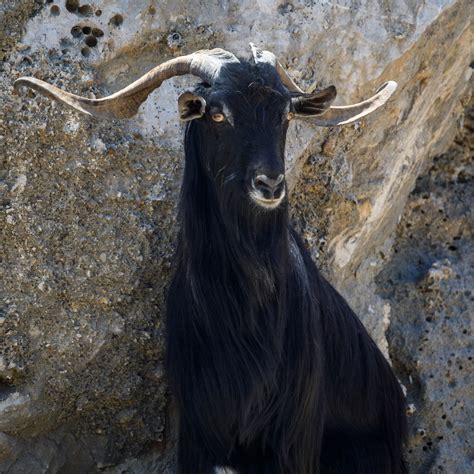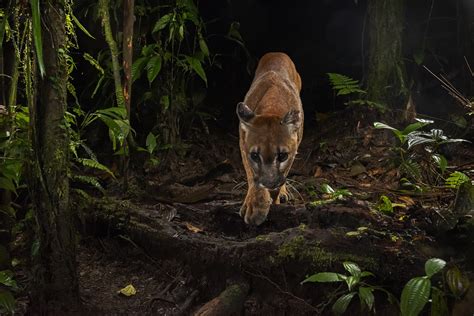
Wild goat populations in the remote Tian Shan mountains of Central Asia are facing a precarious future as a new study reveals a concerning decline in their numbers, coupled with a rapidly shifting habitat due to climate change. Researchers from the University of Veterinary Medicine Vienna, the University of Oxford, and the Wildlife Conservation Society (WCS) have found that these iconic animals, known as Siberian ibex, are experiencing shrinking habitats and increased competition, threatening their long-term survival.
The study, published recently, highlights the alarming rate at which suitable habitat for the ibex is disappearing. Utilizing GPS tracking data from 80 ibex over several years, combined with climate modeling, scientists have mapped the current and future distribution of these animals. Their findings indicate a significant reduction in available habitat, particularly at lower elevations, due to rising temperatures and altered vegetation patterns. “Our research shows that climate change is already impacting ibex populations in the Tian Shan,” said Dr. Cornelia Jäger from the University of Veterinary Medicine Vienna, the lead author of the study. “They are losing ground, and we need to act quickly to protect them.”
The Siberian ibex ( Capra sibirica) is a keystone species in the high-altitude ecosystems of Central Asia. These agile climbers are adapted to survive in harsh, mountainous environments, where they graze on grasses, herbs, and shrubs. Their presence is crucial for maintaining biodiversity, as they serve as prey for predators like snow leopards and wolves, and their grazing habits influence vegetation structure. The Tian Shan mountains, a UNESCO World Heritage site, are a critical refuge for these animals, providing them with the rugged terrain and sparse vegetation they need to thrive.
The researchers focused on understanding how climate change is affecting the ibex’s habitat suitability. They examined various environmental factors, including temperature, precipitation, vegetation cover, and snow cover, to determine the optimal conditions for ibex survival. By projecting future climate scenarios, they were able to predict how these factors would change and how the ibex’s habitat would be affected.
The results were deeply concerning. The study revealed that the ibex’s suitable habitat is shrinking primarily due to rising temperatures, which are causing vegetation to shift to higher elevations. This means that the ibex are being forced to move to higher and higher altitudes to find food and suitable living conditions. However, as they move higher, they encounter increasingly limited space and resources, leading to increased competition and stress.
“The speed at which their habitat is changing is alarming,” explained Dr. Emily Mitchell, a co-author from the University of Oxford. “If we don’t take action to mitigate climate change and protect their remaining habitat, we risk losing these magnificent animals.”
The consequences of habitat loss are far-reaching. As the ibex are forced into smaller areas, they become more vulnerable to disease outbreaks, poaching, and competition with livestock. The study also found that the ibex are facing increased competition with domestic livestock, particularly sheep and goats, which are increasingly grazing in their traditional habitats. This competition for resources further exacerbates the challenges facing the ibex.
“Competition with livestock is a major threat to ibex populations,” said Dr. Peter Zahler, WCS Regional Director for Asia Programs and co-author of the study. “We need to work with local communities to find ways to reduce grazing pressure in critical ibex habitats.”
The study calls for urgent conservation action to protect the Siberian ibex and their habitat. The researchers recommend several strategies, including:
- Reducing greenhouse gas emissions: Mitigating climate change is essential to slow down the rate of habitat loss.
- Protecting and restoring ibex habitat: Establishing protected areas and restoring degraded habitats can provide the ibex with refuges and corridors to move between different areas.
- Managing livestock grazing: Implementing sustainable grazing practices and reducing livestock numbers in critical ibex habitats can reduce competition for resources.
- Combating poaching: Strengthening law enforcement and raising awareness among local communities can help to reduce poaching.
- Monitoring ibex populations: Continuously monitoring ibex populations and their habitat is essential to track their status and adapt conservation strategies as needed.
- Community Engagement: Involving local communities in conservation efforts is crucial for ensuring their long-term success.
The researchers emphasize the importance of working collaboratively with local communities to find solutions that benefit both the ibex and the people who depend on the same resources. “Conservation cannot be successful without the support of local communities,” said Dr. Jäger. “We need to find ways to work together to protect these animals and their habitat for future generations.”
The study also highlights the need for further research to understand the full impact of climate change on the ibex and other high-altitude species. More research is needed to investigate the genetic diversity of ibex populations, their movement patterns, and their interactions with other species. This information is essential for developing effective conservation strategies.
The situation facing the Siberian ibex is a stark reminder of the devastating impact that climate change is having on wildlife around the world. It underscores the urgent need for global action to reduce greenhouse gas emissions and protect biodiversity. The fate of these magnificent animals hangs in the balance, and their survival depends on our willingness to act.
In-Depth Analysis:
The study’s significance lies not only in documenting the decline of ibex habitats but also in providing a detailed, data-driven analysis of the specific mechanisms driving this decline. By integrating GPS tracking data with climate modeling, the researchers have offered a more nuanced understanding of how climate change is impacting the ibex. This approach allows for more targeted conservation efforts.
The use of GPS tracking data is particularly valuable. It provides precise information about the ibex’s movements, habitat use, and response to environmental changes. This data can be used to identify critical areas for conservation and to monitor the effectiveness of conservation interventions. Climate modeling allows the researchers to project future habitat suitability under different climate scenarios. This information can be used to inform long-term conservation planning and to prioritize areas that are most likely to remain suitable for the ibex in the future.
The researchers also acknowledge the limitations of their study. For example, the climate models used in the study are based on global climate projections, which may not accurately reflect local climate conditions in the Tian Shan mountains. Additionally, the study only focused on a limited number of ibex populations, and the results may not be representative of all ibex populations in the region. Despite these limitations, the study provides valuable insights into the impacts of climate change on the ibex and highlights the need for urgent conservation action.
The study also underscores the importance of considering the human dimension of conservation. The ibex share their habitat with local communities, who depend on the same resources. Conservation efforts must take into account the needs and livelihoods of these communities. This requires working collaboratively with local communities to find solutions that benefit both the ibex and the people who depend on the same resources.
Background Information:
The Siberian ibex is found throughout Central Asia, including in the Tian Shan, Altai, and Pamir mountains. They are well-adapted to living in high-altitude environments, where they can survive in extreme temperatures and on sparse vegetation. These animals are typically active during the day, grazing on grasses, herbs, and shrubs. In the winter, they may move to lower elevations to find food.
The ibex play an important role in the ecosystem. They are a key prey species for snow leopards and wolves, and their grazing habits influence vegetation structure. They are also culturally significant to many local communities, who have traditionally hunted them for meat and hides.
However, ibex populations have declined in recent years due to habitat loss, poaching, and competition with livestock. Climate change is now emerging as a major threat to their survival. Rising temperatures are causing vegetation to shift to higher elevations, reducing the amount of suitable habitat available for the ibex. This is forcing them to move to higher and higher altitudes, where they face increased competition and stress.
The conservation of the Siberian ibex is important for maintaining biodiversity in the high-altitude ecosystems of Central Asia. These animals are a key part of the ecosystem, and their loss would have cascading effects on other species. Their conservation is also important for preserving the cultural heritage of local communities who have traditionally relied on them for sustenance.
Expanded Context:
The predicament of the Siberian ibex mirrors the challenges faced by numerous other high-altitude species globally. Climate change is disproportionately affecting mountainous regions, leading to rapid glacial melt, altered precipitation patterns, and shifts in vegetation zones. These changes are disrupting the delicate balance of mountain ecosystems and threatening the survival of many iconic species.
Snow leopards, for instance, share the same habitat as the ibex and are also facing threats from climate change, habitat loss, and poaching. Other high-altitude species, such as the Tibetan antelope and the Himalayan tahr, are also vulnerable to climate change and other human-induced pressures.
The conservation of high-altitude ecosystems requires a multi-faceted approach that addresses the underlying drivers of climate change, protects critical habitats, and engages local communities. This requires international cooperation, strong policy frameworks, and increased investment in conservation efforts.
The study on the Siberian ibex provides valuable lessons for conserving other high-altitude species. It highlights the importance of using data-driven approaches to understand the impacts of climate change and to inform conservation planning. It also underscores the need to consider the human dimension of conservation and to work collaboratively with local communities.
Recommendations for Policymakers:
Based on the study’s findings, policymakers should consider the following recommendations:
- Develop and implement national climate change adaptation plans: These plans should include specific measures to protect vulnerable species and ecosystems, such as the Siberian ibex and its habitat.
- Strengthen protected area networks: Expand and improve the management of protected areas in the Tian Shan mountains and other critical ibex habitats.
- Promote sustainable grazing practices: Work with local communities to implement sustainable grazing practices that reduce competition between livestock and ibex.
- Combat poaching and illegal wildlife trade: Strengthen law enforcement and raise awareness among local communities about the importance of protecting ibex.
- Invest in research and monitoring: Support research to better understand the impacts of climate change on ibex populations and to monitor the effectiveness of conservation interventions.
- Enhance regional cooperation: Promote regional cooperation among Central Asian countries to address transboundary conservation issues, such as the movement of ibex populations across borders.
- Incorporate traditional knowledge: Recognize and incorporate the traditional knowledge of local communities into conservation planning and management.
- Promote alternative livelihoods: Support the development of alternative livelihoods for local communities that reduce their dependence on natural resources, such as ecotourism and sustainable agriculture.
- Raise public awareness: Conduct public awareness campaigns to educate people about the importance of conserving ibex and other high-altitude species.
- Secure long-term funding: Ensure that sufficient funding is available for ibex conservation efforts, both from national governments and international donors.
Long-term Implications:
The decline of the Siberian ibex is not just a conservation issue; it has broader implications for the health and resilience of the entire Tian Shan ecosystem. The loss of a keystone species like the ibex can trigger a cascade of effects, impacting other species and ecosystem processes.
For example, the decline of ibex populations could lead to a decrease in the population of snow leopards, which rely on them as a primary food source. This, in turn, could lead to an increase in the population of other prey species, such as wild boar, which could have negative impacts on vegetation.
The loss of ibex could also have economic consequences for local communities who rely on them for tourism and hunting. Ecotourism, in particular, is becoming an increasingly important source of income for many communities in the Tian Shan region. The presence of healthy ibex populations is a major draw for tourists, and their decline could have a negative impact on the local economy.
Therefore, the conservation of the Siberian ibex is essential not only for preserving biodiversity but also for maintaining the health and resilience of the Tian Shan ecosystem and for supporting the livelihoods of local communities.
Frequently Asked Questions (FAQ):
Q1: What are Siberian ibex and why are they important?
A: Siberian ibex (Capra sibirica) are wild goats native to the high-altitude regions of Central Asia, particularly the Tian Shan mountains. They are a keystone species, meaning they play a critical role in their ecosystem. As herbivores, they influence vegetation structure and serve as prey for predators like snow leopards and wolves, contributing to the overall biodiversity and stability of their habitat.
Q2: What are the main threats facing Siberian ibex populations in the Tian Shan mountains?
A: The primary threats include:
- Climate Change: Rising temperatures are causing habitat loss and shifts in vegetation zones, reducing available grazing areas.
- Habitat Loss: Human activities, such as livestock grazing and development, are encroaching on ibex habitats.
- Competition with Livestock: Domestic animals, especially sheep and goats, compete with ibex for food and resources.
- Poaching: Illegal hunting continues to pose a threat to ibex populations.
Q3: What did the recent study reveal about the impact of climate change on ibex habitat?
A: The study, conducted by researchers from the University of Veterinary Medicine Vienna, the University of Oxford, and the Wildlife Conservation Society (WCS), found that climate change is causing a significant reduction in suitable habitat for ibex in the Tian Shan mountains. Rising temperatures are forcing them to move to higher elevations, where resources are limited, leading to increased competition and stress. The study projects further habitat loss in the future if climate change continues unabated.
Q4: What conservation measures are being recommended to protect Siberian ibex?
A: The researchers recommend a combination of strategies, including:
- Mitigating climate change by reducing greenhouse gas emissions.
- Protecting and restoring ibex habitat through the establishment of protected areas and habitat restoration projects.
- Managing livestock grazing to reduce competition for resources.
- Combating poaching through stricter law enforcement and community engagement.
- Monitoring ibex populations to track their status and adapt conservation strategies.
- Engaging local communities in conservation efforts to ensure their long-term success.
Q5: How can local communities contribute to the conservation of Siberian ibex?
A: Local communities play a crucial role in ibex conservation. They can:
- Participate in sustainable grazing practices to reduce competition with ibex.
- Report poaching activities to authorities.
- Support ecotourism initiatives that benefit both the community and ibex conservation.
- Engage in community-based conservation programs that promote sustainable resource management.
- Share traditional knowledge about ibex ecology and behavior with researchers and conservation managers.









